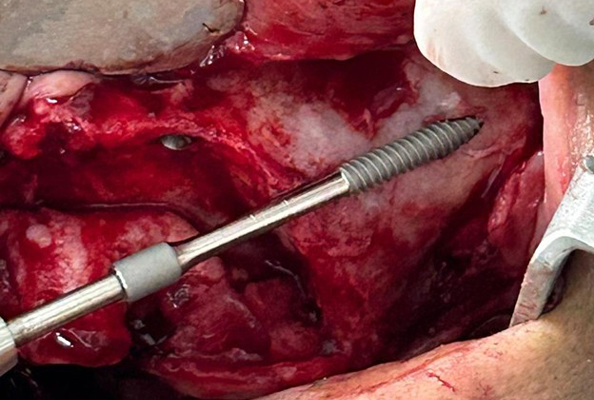Introduction
Zygomatic implants have become a revolutionary solution in dental implantology, offering a unique and effective treatment option for patients with severe maxillary bone loss. In certain clinical cases where traditional dental implants cannot be placed due to inadequate bone volume in the upper jaw, zygomatic implants provide a viable alternative. These implants anchor into the zygomatic bone, or cheekbone, bypassing the need for bone grafting and enabling the placement of stable, functional implants in patients who otherwise may not be candidates for conventional implant placement.
This comprehensive guide will explore the indications, techniques, advantages, and potential complications of zygomatic implants, offering insights into how they can be integrated into treatment plans for complex maxillary cases.
1. Understanding Zygomatic Implants
Zygomatic implants are long, angled dental implants designed to anchor into the zygomatic bone, located in the cheek area, instead of the alveolar bone. These implants are particularly beneficial for patients with severe atrophy or resorption of the upper jaw, often as a result of tooth loss, trauma, or congenital defects. The zygomatic bone provides a stable and dense area of bone that can support dental implants, making it an ideal alternative to traditional implant placement in cases where the maxillary bone has significantly resorbed.
Unlike standard dental implants, which are anchored in the maxillary alveolar ridge, zygomatic implants bypass the need for bone grafting by utilizing the naturally available zygomatic bone. They are typically much longer than regular implants and are positioned at an angle to achieve optimal anchorage. The procedure to place these implants requires a high level of precision and skill, as the implant is placed into the posterior region of the maxilla, close to the sinus cavity.
Key Features of Zygomatic Implants:
- Length: Zygomatic implants are typically 30–52 mm in length, considerably longer than standard implants.
- Placement: They are positioned in the zygomatic bone at an angle, typically between 45–60 degrees.
- Indications: They are used in cases where significant bone resorption in the maxilla prevents the use of traditional dental implants or bone grafting procedures.
2. Indications for Zygomatic Implants
Zygomatic implants are often considered for patients who present with significant bone loss in the upper jaw, where conventional dental implants cannot be placed. Common indications for zygomatic implants include:
A. Severe Maxillary Bone Resorption
When a patient has experienced substantial bone loss in the upper jaw due to prolonged edentulism, periodontal disease, or trauma, there may be insufficient bone available for traditional implants. Zygomatic implants provide an alternative that bypasses the need for bone grafting by utilizing the zygomatic bone, which often has sufficient volume and quality for implant anchorage.
B. Failed Bone Grafting Procedures
Some patients who have undergone traditional bone grafting may not achieve sufficient bone volume or density for conventional implants. Zygomatic implants offer a solution for patients with failed grafts or who wish to avoid additional grafting procedures.
C. Atrophic Maxilla and Sinus Lift Limitations
For patients with advanced maxillary atrophy, especially in the posterior maxilla, the lack of bone in the alveolar ridge and the proximity of the maxillary sinus often precludes the use of traditional implants. In these cases, zygomatic implants can be an ideal solution, as they anchor into the zygomatic bone, bypassing the sinus and avoiding the need for sinus lifts.
D. Trauma or Congenital Defects
Patients who have suffered trauma to the maxilla or have congenital defects that cause significant bone loss may not have enough remaining bone in the upper jaw for traditional implants. Zygomatic implants are an effective solution for these patients, allowing for the restoration of function and esthetics with minimal bone modification.
E. Immediate Loading Cases
In some cases, zygomatic implants can support immediate loading, providing patients with functional restorations immediately after implant placement. This is particularly beneficial for patients who require full-mouth rehabilitation and wish to avoid long periods of edentulism.
3. Surgical Technique for Zygomatic Implants
The placement of zygomatic implants is a complex procedure that requires precision and skill. It is typically performed under local anesthesia with or without sedation, depending on the patient’s needs and the complexity of the case. A thorough preoperative evaluation, including 3D imaging (CBCT), is essential to assess the anatomy of the maxilla, the zygomatic bone, and the sinus area.
A. Preoperative Planning
Preoperative planning is crucial for successful zygomatic implant placement. Surgeons should assess:
- Bone anatomy: Detailed CBCT imaging helps determine the best trajectory and placement site for the zygomatic implants.
- Sinus and soft tissue considerations: Understanding the relationship between the maxillary sinus and surrounding structures helps avoid complications during placement.
- Patient health: Zygomatic implant surgery requires the patient to be in overall good health, particularly regarding their ability to heal post-surgery.
B. Incision and Flap Elevation
The procedure begins with an incision in the gingiva, usually in the maxillary ridge. The soft tissue is then elevated to expose the underlying bone and gain access to the zygomatic bone. In most cases, a flap is raised in the region of the upper molars or premolars.
C. Drilling and Implant Placement
After the bone is exposed, the surgeon uses specialized drills to create a channel into the zygomatic bone at an appropriate angle. The implant is then carefully placed, often at an angle of 45–60 degrees, depending on the available bone volume and the desired implant position. The implant is usually anchored in the zygomatic bone, which provides a secure foundation for the restoration.
D. Postoperative Care and Monitoring
Following implant placement, the incision is sutured, and the patient is given specific instructions for postoperative care. Patients should avoid placing excessive pressure on the implant site and follow guidelines for oral hygiene, pain management, and follow-up appointments. Immediate loading is sometimes possible, but often, a healing period of 4–6 months is recommended for osseointegration before the final restoration is placed.
4. Advantages and Benefits of Zygomatic Implants
Zygomatic implants offer several advantages in cases of severe maxillary bone loss, making them an ideal solution for patients who might otherwise require complex grafting procedures or be unable to receive traditional implants. Some of the key benefits include:
A. Reduced Need for Bone Grafting
Zygomatic implants significantly reduce or eliminate the need for bone grafting. In patients with substantial bone loss in the maxilla, grafting procedures may be invasive and costly, requiring multiple surgeries and prolonged healing times. Zygomatic implants bypass the need for bone augmentation by utilizing the zygomatic bone, providing a more efficient and cost-effective solution.
B. Immediate Functionality and Aesthetics
In some cases, zygomatic implants can be loaded immediately with a provisional restoration, offering patients the ability to restore function and aesthetics without the extended period of edentulism that often accompanies traditional implant procedures.
C. High Success Rate
When placed correctly, zygomatic implants have demonstrated high success rates, with studies showing success rates of 90% or higher. Their long-term stability, combined with their ability to avoid the challenges of bone grafting and sinus lifts, makes them a reliable treatment option.
D. Less Invasive than Traditional Approaches
For patients with severely resorbed maxillae, traditional approaches often require multiple surgeries, including bone grafts, sinus lifts, and prolonged healing times. Zygomatic implants, however, offer a less invasive solution that can often be completed in one stage, reducing the number of procedures and overall recovery time for the patient.
5. Potential Complications and How to Avoid Them
Like all surgical procedures, zygomatic implant placement comes with potential risks and complications. While the success rate is high, it is essential for clinicians to be aware of potential challenges and how to mitigate them.
A. Sinus Perforation
Sinus perforation is a concern during zygomatic implant placement, especially when drilling in the posterior maxilla near the sinus cavity. To avoid this:
- Use preoperative imaging to assess sinus anatomy.
- Proceed with careful planning to avoid damaging the sinus membrane.
B. Implant Misplacement
Incorrect placement of the implant, such as angling the implant too steeply or placing it too anteriorly, can lead to implant failure. Ensuring accurate placement through proper planning and surgical technique is crucial.
C. Infection
Infections can occur, especially if there is contamination during the surgery. Maintaining a sterile field and using prophylactic antibiotics can help reduce the risk.
D. Nerve Damage
While rare, there is a risk of nerve injury, particularly to the infraorbital nerve. Careful planning and knowledge of local anatomy can prevent this complication.
Conclusion
Zygomatic implants have revolutionized the management of complex maxillary cases, offering a solution for patients with severe bone loss who might not be candidates for traditional dental implants. With proper planning, surgical precision, and careful postoperative care, zygomatic implants provide a high rate of success, reducing the need for bone grafting and allowing patients to restore function and aesthetics efficiently.












